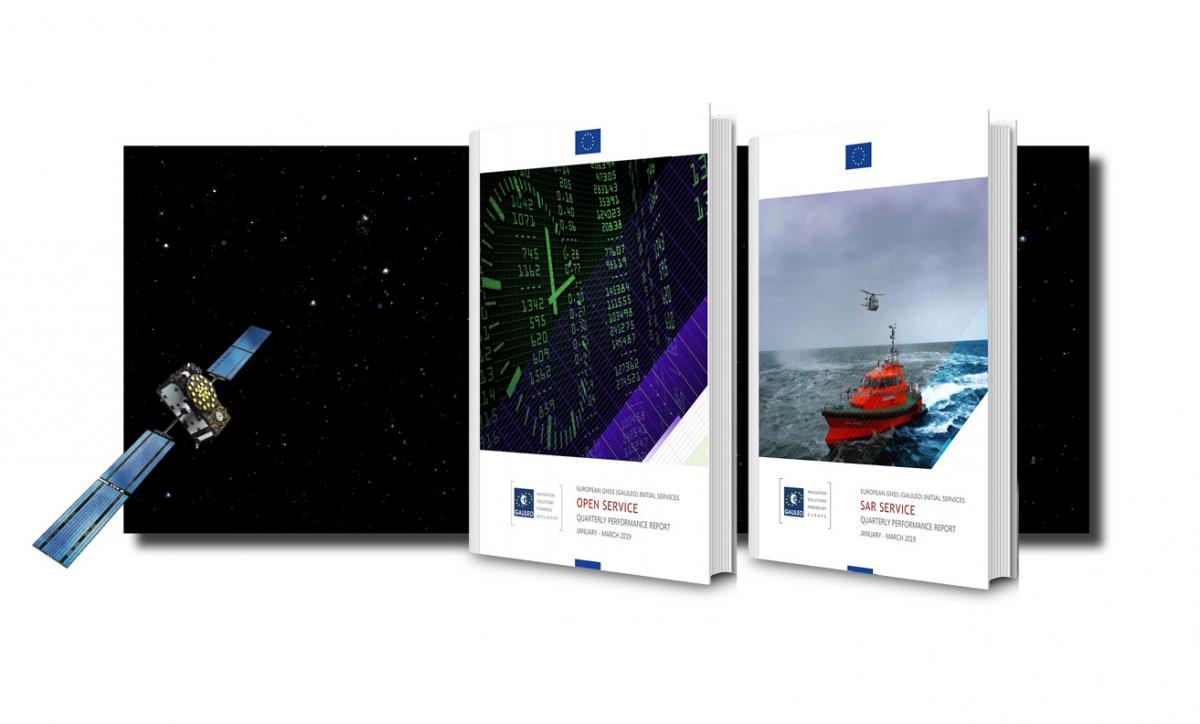OS and SAR Service Performance Reports for the first quarter of 2019 (covering January, February and March) have been published in the Performance Reports section of the European GNSS Service Centre’s web portal.

The Galileo Open Service (OS) and SAR Service Quarterly Performance Reports for the first quarter of 2019 are available in the Electronic Library, under the Performance Reports section. The reports provide the status of the Galileo constellation and the achieved performance over the reporting period (January, February and March 2019).
These quarterly reports provide the public with the latest information on the Galileo OS and SAR/Galileo Initial Services performance statistics, measured against their Minimum Performance Levels (MPLs) as declared in their respective Galileo Service Definition Documents (OS - SDD and SAR - SDD). In particular, the reports provide information on parameters such as:
-
For Open Service: Initial Ranging Performance, Galileo to GPS Time Offset (GGTO) determination performance, Galileo Positioning Performance, the Timely Publication of NAGUs;
-
For SAR/Galileo Service: Detection and Location Performance and Infrastructure Availability Performance.
Highlights from Q1-2019 on Galileo Open Service and SAR Service:
As in previous periods, the measured Galileo OS and SAR Service performance figures comfortably exceed their MPL thresholds.
Some highlights from the Q1-2019 performance reports:
Open Service (see Performance Report)
-
The Availability of both the Galileo Ranging Service at the Worst User Location (WUL) and the Healthy Signal were significantly better than the MPLs (all above the MPL target of 87%). In particular, in the first quarter the first of these reached a monthly value of 100% for the entire quarter.
-
The Galileo UTC Determination Service Availability reached a monthly value of 100% for the entire quarter, exceeding the MPL target of 87%. Moreover, the GGTO Determination Availability comfortably exceeded the MPL target of 80% over the reported months (98.24% in January, 97.66% in February and 97.33% in March).
-
The target MPLs for Publishing NAGUs were met both for Planned (publication at least 24 hours before the start of a scheduled event) and Unplanned (publication no more than 72 hours after an unscheduled event starts) events. A total of 11 NAGUs were published on the GSC web portal in the reporting period.
SAR Service (see Performance Report)
-
Detection Service Probability for each of the Reference Beacons (REFBE) was 99.5% every month - above the MPL target of 99%.
-
Both the single and multi-burst Location Probabilities for each REFBE were, in all cases, well above the MPLs (which are 75% and 98%, respectively).
-
SAR Service Infrastructure Performance is measured by the following figures: Availability of the SAR/Galileo Ground Segment, SAR/Galileo Space Segment and SAR/Galileo Server. Regarding the Ground Segment availability, all EU MEOLUT Local Facilities show long-term normalised “Nominal” mode availability performance better than the MPL target (set at 95%), achieving in March 2019 values of 96.4%, 98.2% and 98.3% for Larnaca, Maspalomas and Spitsbergen respectively. A reduced “Nominal” mode short-term availability is observed in Larnaca during the month of January (89%), which is linked to unplanned events after the MEOLUT Facility SW upgrade.
For the most up-to-date information on the Galileo system and constellation, visit the European GNSS Service Centre (GSC) website, in particular, the Galileo constellation status section. For an exhaustive description of the Minimum Performance Levels (MPLs), refer to the Galileo OS SDD.
For more details on Galileo performance and its Services, do not hesitate to contact the Galileo Help Desk. Moreover, if you wish to receive NAGUs automatically, please, register on the GSC web portal.
Media note: This feature can be republished without charge provided the European GNSS Agency (GSA) is acknowledged as the source at the top or the bottom of the story. You must request permission before you use any of the photographs on the site. If you republish, we would be grateful if you could link back to the GSA website (http://www.gsa.europa.eu).